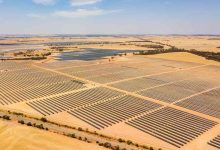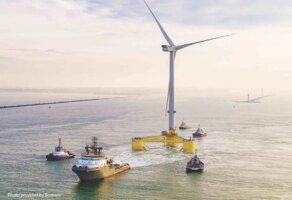Victoria has topped the states for total wind and solar generation in 2021, but Australia’s performing projects were both located on the opposite end of the country, new analysis has revealled.
In a recent LinkedIn post, Rystad Energy’s senior analyst David Dixon, detailed the best performing large-scale solar and wind projects of the 2021 year.
According to the post, the year’s best performing solar project was Sun Energy’s Merredin solar farm in Western Australia, which achieved an effective capacity factor of 29.6 per cent across the year.
This was followed by Adani Australia’s Rugby Run solar farm in Queensland, which achieved a 28.3 per cent capacity factor and Neoen’s Griffith solar farm which operated with a 27.1 per cent capacity factor.
The rankings reveal the ability for high capacity factors to be achieved in a wide range of Australian regions, with no single state dominating the list for generation performance in both solar and wind power.
APA Group’s Badgingarra wind farm topped the list for best performing wind farms, with the project, located just north of Perth in Western Australia achieving a 46.7 per cent capacity factor.
Other projects in the top three were the Kiata wind farm in Victoria, developed by First Sentier Investors and Windlab which achieved a 43.0 per cent capacity factor, and the Granville Harbour wind farm in Tasmania with a 41.6 per cent capacity factor.
On a state-verses-state basis, Victoria topped all Australian jurisdictions for combined wind and solar output in 2021, generating a total of 9,767GWh of wind and solar power, followed by New South Wales with 8,819GWh and South Australia with 6,396GWh.
OpenNEM data shows 2021 setting new records for both increasing market share for wind and solar generation, and falling market share for coal generators, with total generation from wind and solar projects growing 22 per cent in 2021 compared to the year prior.
In 2021, renewables supplied a combined 32.2 per cent of Australia’s electricity needs, with solar growing to a 13.4 per cent market share and wind’s market share growing to 11.6 per cent. The share of hydroelectricity remained relatively steady, supplying 7.0 per cent of Australia’s electricity in 2021.
The market share of coal generators fell below 60 per cent for the first time, dropping to 59.9 per cent in 2021, while gas generation fell to 7.8 per cent.
Fossil fuel generators were squeezed in 2021, both as a result of the rising generation from new renewable energy projects and a fall in wholesale electricity prices that has seen a growing number of traditional “baseload” generators seeking opportunities to operate with more flexibility within electricity markets.
The market share of renewable energy generators has more than doubled since 2017, according to OpenNEM data.










